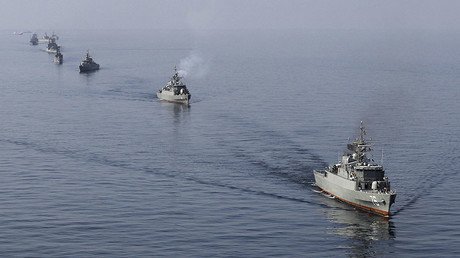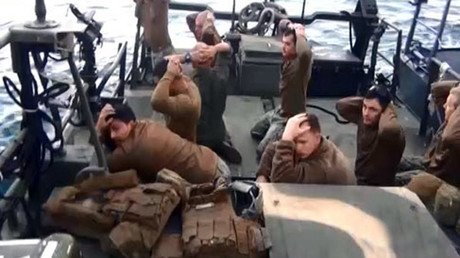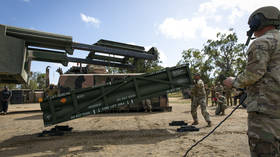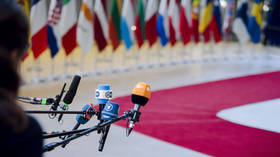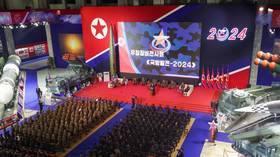Iranian vessels mounted with machine guns approach US warship in Strait of Hormuz
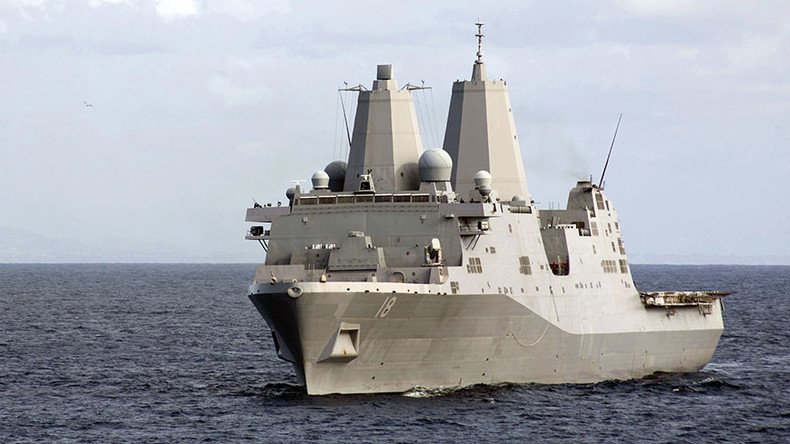
In the latest escalation of tensions between Washington and Tehran, five Iranian military vessels maneuvered extremely close to a US warship carrying a top American general just six months after two US ships were detained by Iran.
The ships, which were dispatched to the Strait of Hormuz by Iran’s elite Revolutionary Guard Corps (IRGC) on Monday, came within 500 yards (457 meters) of the USS New Orleans and its escort, the USS Stout, a guided missile destroyer, according to Reuters.
The Iranian fleet consisted of four speedboats, three of which had mounted machine guns, and a guided missile patrol ship.
In the first encounter, a Houdong fast attack craft, one of the largest operated by the IRGC, passed closely by the ship, the Wall Street Journal reported. Later, the four smaller patrol craft approached the USS New Orleans as it moved through the Strait. One of the Iranian boats cut off its engine and floated past both of the US vessels as its crew filmed the sailors aboard the warships.
The USS New Orleans was carrying about 650 Marines, as well as Army General Joseph Votel, who oversees all American military forces in the Middle East.
Although US officials stressed to Reuters that such events fall within the category of professional interactions, Votel said his main concern is that "we don't always have a lot of time to deal with those interactions..."
“I think what we’ve probably learned here today is that it’s measured in minutes,” he said.
The US military’s roughly 250 transits through the Strait of Hormuz each year are met by such an escort 90 percent of the time, some 10 percent of which the Navy claims are unsafe, abnormal, or unprofessional.
“It’s very common for them to come up to within 300, 500 yards of us, and then they’ll turn, or parallel us and stop,” said Lieutenant Forrest Griggs, the USS New Orleans’ operations officer, as quoted by The Wall Street Journal. “We try not to become accustomed to that because we don’t want to become complacent.”
Meanwhile, the deputy commander of the naval forces of Iran’s Revolutionary Guard Corps, General Alireza Tangsiri, has stressed that the Iranian military “observes all foreign warships in the Persian Gulf. This control is not something new, it always takes place on a regular basis around the clock,” TASS reported, citing ISNA.
“This observation of the movements of warships, we will continue to pursue. This is especially true about vessels of the countries, which are outside of our region, and, above all, the countries that are hostile to the Islamic Republic,” he added.
Monday’s incident came just six months after two US vessels were detained by Iran after they veered into Iranian territorial waters in the Persian Gulf on their way from Kuwait to the home of the US Fifth Fleet in Bahrain.
Footage was later released showing the 10 US sailors kneeling with their hands behind their heads. Washington later claimed that their treatment at the hands of the IRGC had violated international law.
The sailors were finally set free some 15 hours after being detained. The US State Department allegedly had to resort to using US Secretary of State John Kerry’s personal contacts with Iran’s elite to secure the crew’s release.
Two senior Naval officers have since been sacked over the incident. Just two weeks ago, Captain Kyle S. Moses, the US task force’s commanding officer, was fired over loss of confidence in his ability to command. Commander Eric Rasch, the executive officer of Riverine Squadron 3 at the time of the incident, was relieved of his post in May.
Shortly after their detainment, US Defense Secretary Ash Carter said the sailors had made a navigational error that had taken them off course.
